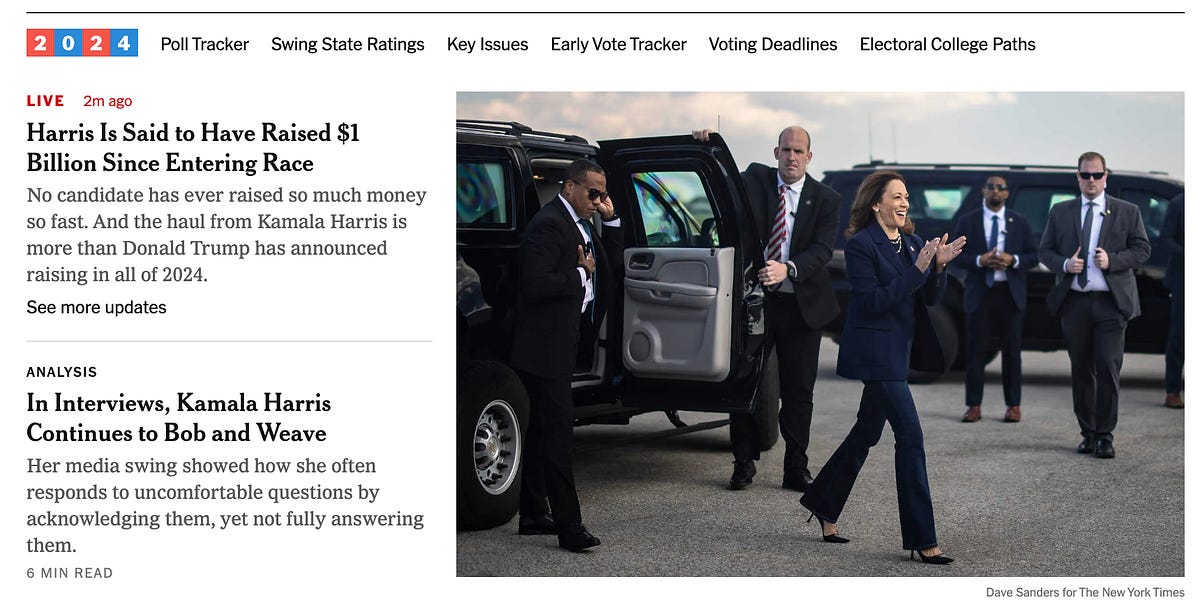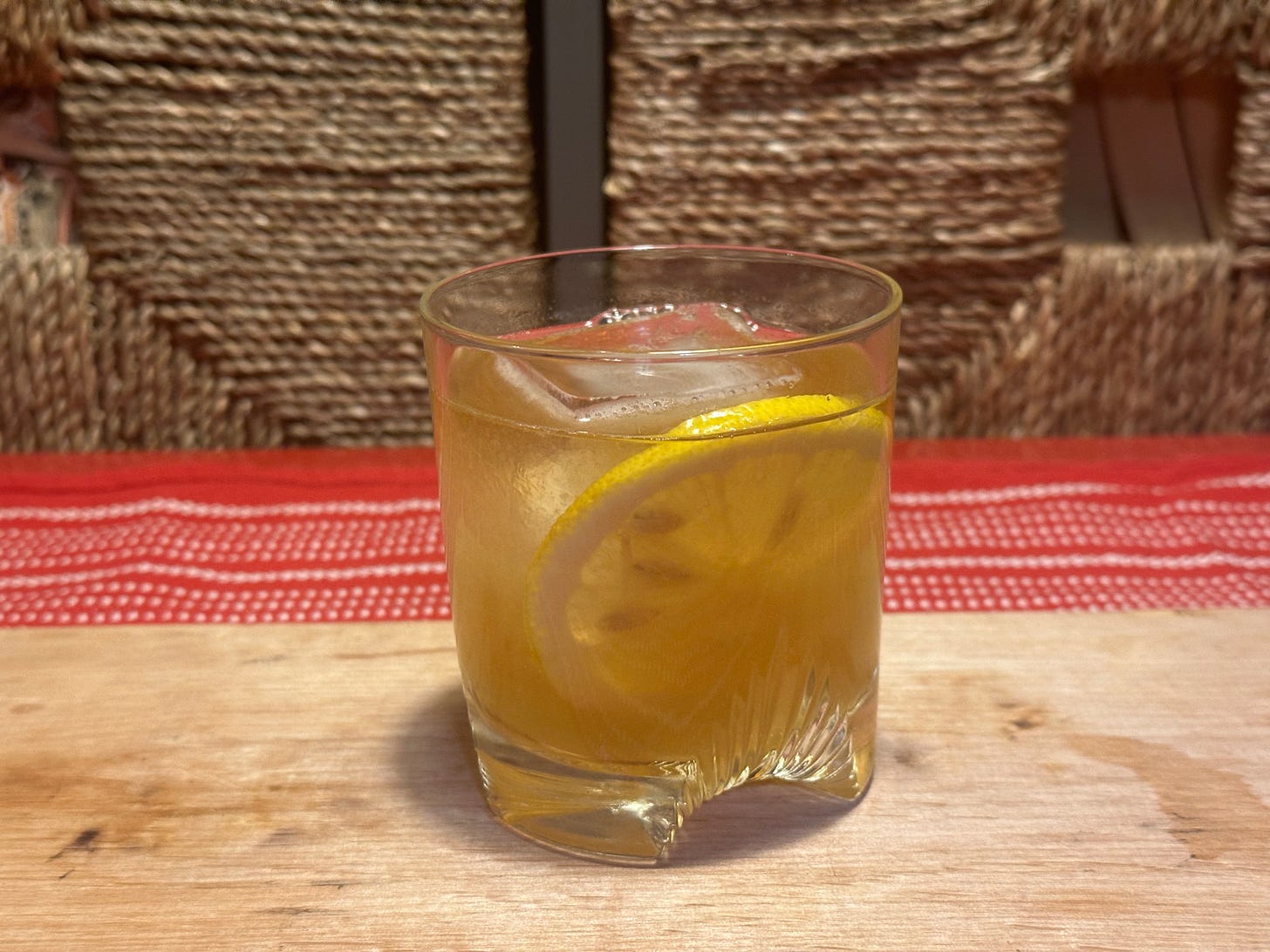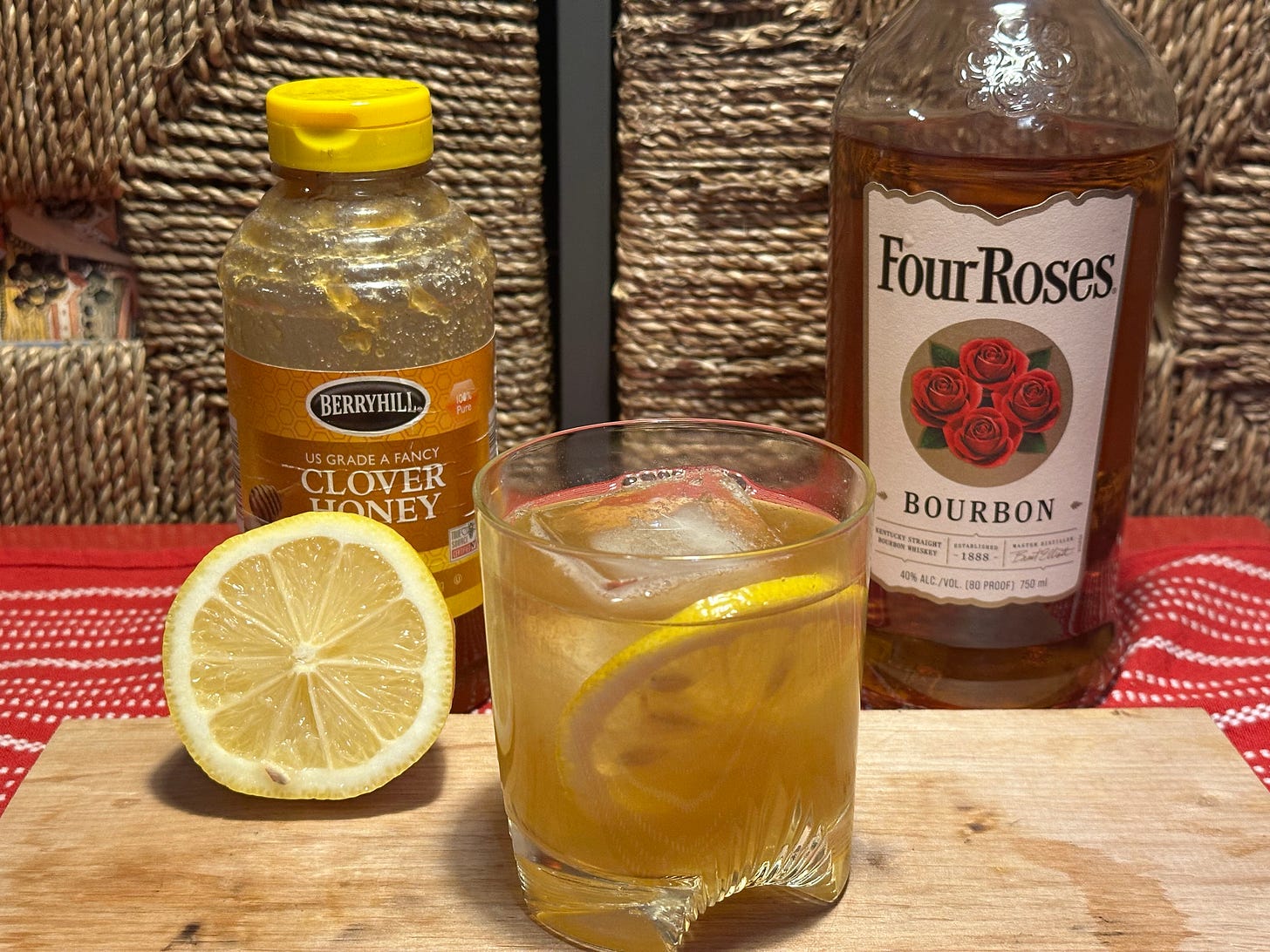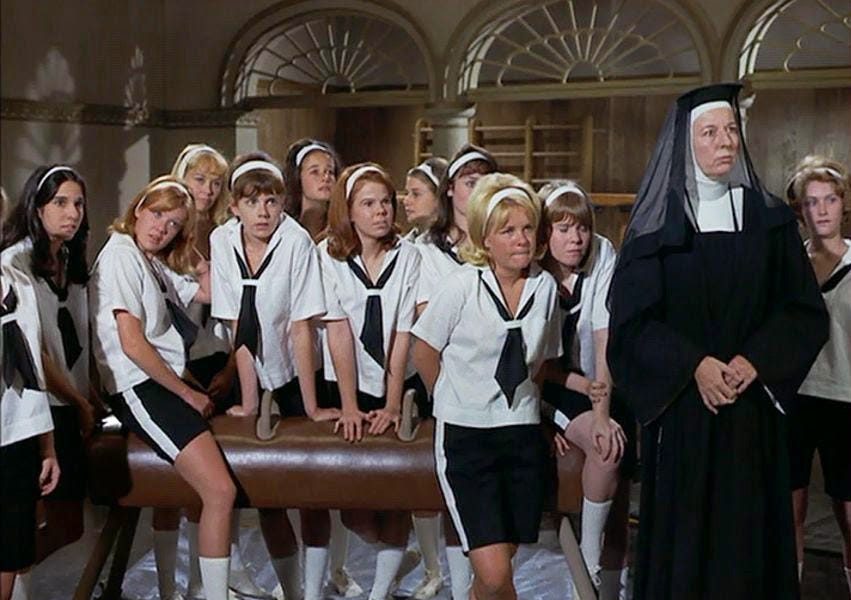Greetings, Wonketeers! I’m Hooper, your bartender. I was watching the news about my favorite sneaker convention this week, and for some reason, the idea of gold as the theme for this week’s cocktail came to mind. (I do not, in fact, have a favorite sneaker convention. Some weeks, the segues are rougher than others.) In any event, let’s make a simple, smooth cocktail. This one sounds like it should be a turn of the century classic, but is surprisingly modern. Time for a Gold Rush. Here’s the recipe:
Gold Rush
2 oz. Four Roses Bourbon
1 oz. fresh lemon juice
1 ½ oz. honey syrup
Add all ingredients to a cocktail shaker over ice. Shake and strain into a highball glass over fresh ice. Express an orange twist over the glass, garnish with a lemon slice, and serve.
The Gold Rush looks all for the world like a liquor swap version of the Bee’s Knees, a gin, lemon, and honey cocktail that dates back to 1929. You’d think that the Gold Rush would come from the same era, but it was invented in the 1990s at the legendary Milk and Honey bar. What took so long? The answer’s a touch surprising – bourbon, as we know it, is a fairly modern liquor.
Bourbon has been an American spirit from the beginning. Early frontier whiskey was basically moonshine. Farmers distilled their corn harvest down into clear liquor, something to sell in hard times. Aged “bourbon” whiskey, rested in charred oak barrels, was first created in 1821. For the entirety of its history, bourbon has been a product adulterated with caramel color, fruit flavors, and other additives. Bluntly, it was bottom shelf garbage. In the ‘80s, bourbon sales hit an all time low, as customers began to value quality over liquor content in their drinks.
Ancient Age Distillery finally cracked the code when they used single-malt Scotch as a model. They created Blanton’s, the very first single barrel bourbon, in 1984. Since then, the number of small distillers has bloomed, and the quality of bourbon has soared. Nobody made a quality cocktail like the Gold Rush with bourbon before the 1990s, because nobody wanted a bourbon cocktail at all.
There are some fantastic bourbons on the market these days. I love Four Roses as a starting point for any cocktail. It’s mellow, straightforward, and supports all kinds of solid drinks. I’m also a huge fan of Woodford Reserve, Bulleit, and Larceny. Ancient Age seems to be a victim of its own success; it’s nearly impossible to get your hands on their truly good products, and overeager fans and greedy resellers snatch up everything that comes out of their distillery. Buffalo Trace is snapped off the shelves as soon as it enters the store, even though it’s no better than Four Roses.
You can forget about getting a bottle of Blanton’s or (Lord help you) Pappy Van Winkle at your local liquor store. By the time you’ve decided you might want a bottle, someone’s already set up a lawn chair in front of the store. They’ll be in at the crack of dawn to buy a bottle and sell it online at twice the price. I’m hoping that the trend of quality bourbon holds, but the market seems to value trendy brands instead of hidden gems. Time will tell.
Let’s talk ingredients:
Four Roses Bourbon: This is Four Roses’ base product, not any of their fancier stuff. It’s a very middle of the road bourbon – not flashy, just good stuff. I would consider going off the beaten path and make this with a rye whiskey like Old Forester. The pepper flavors of rye would be a great contrast with the honey notes. Irish whiskey absolutely loves honey, and would be perfect in this glass.
Honey syrup: Honey and water at a 1:1 ratio, heated until the honey dissolves. You need to dilute the honey in order to use it in a cocktail. If you don’t, it solidifies into a lump at the bottom of your shaker. I use ordinary clover honey for most cocktails. Buckwheat honey would be pretty wild here, especially with the rye whiskey.
Lemon juice: Fresh is best. Plastic lemons give plastic juice. The ratio of lemon juice to honey is entirely up to you – this is fundamentally a whiskey sour, and like all sours the balance of sweet to tart is a personal preference. Honey is marginally less sweet than simple syrup; use a little more than you think at first to find the balance.
Garnish: An orange twist will give you a little citrus oil in the drink without boosting the acidity. I worked at a bar where they spritzed a mist of togarashi bitters over their Bee’s Knees; I thought it was overly precious then and wouldn’t recommend it now. Just because it’s a Bee’s Knees doesn’t mean it needs to sting. Lavender bitters would be nice here, or a fresh spring flower from the backyard if you’re lucky. Make this drink your own and adorn it as you see fit.
In summary and conclusion, drink well, drink often, and tip your bartender — donate to Wonkette at the link below!
If you’re buying cocktail implements and whatnot at Amazon, this button gives us a small commission!
You can find me on Threads and Insta at samurai_grog!
OPEN THREAD!
























































![Key Metrics for Social Media Marketing [Infographic] Key Metrics for Social Media Marketing [Infographic]](https://www.socialmediatoday.com/imgproxy/nP1lliSbrTbUmhFV6RdAz9qJZFvsstq3IG6orLUMMls/g:ce/rs:fit:770:435/bG9jYWw6Ly8vZGl2ZWltYWdlL3NvY2lhbF9tZWRpYV9yb2lfaW5vZ3JhcGhpYzIucG5n.webp)





















